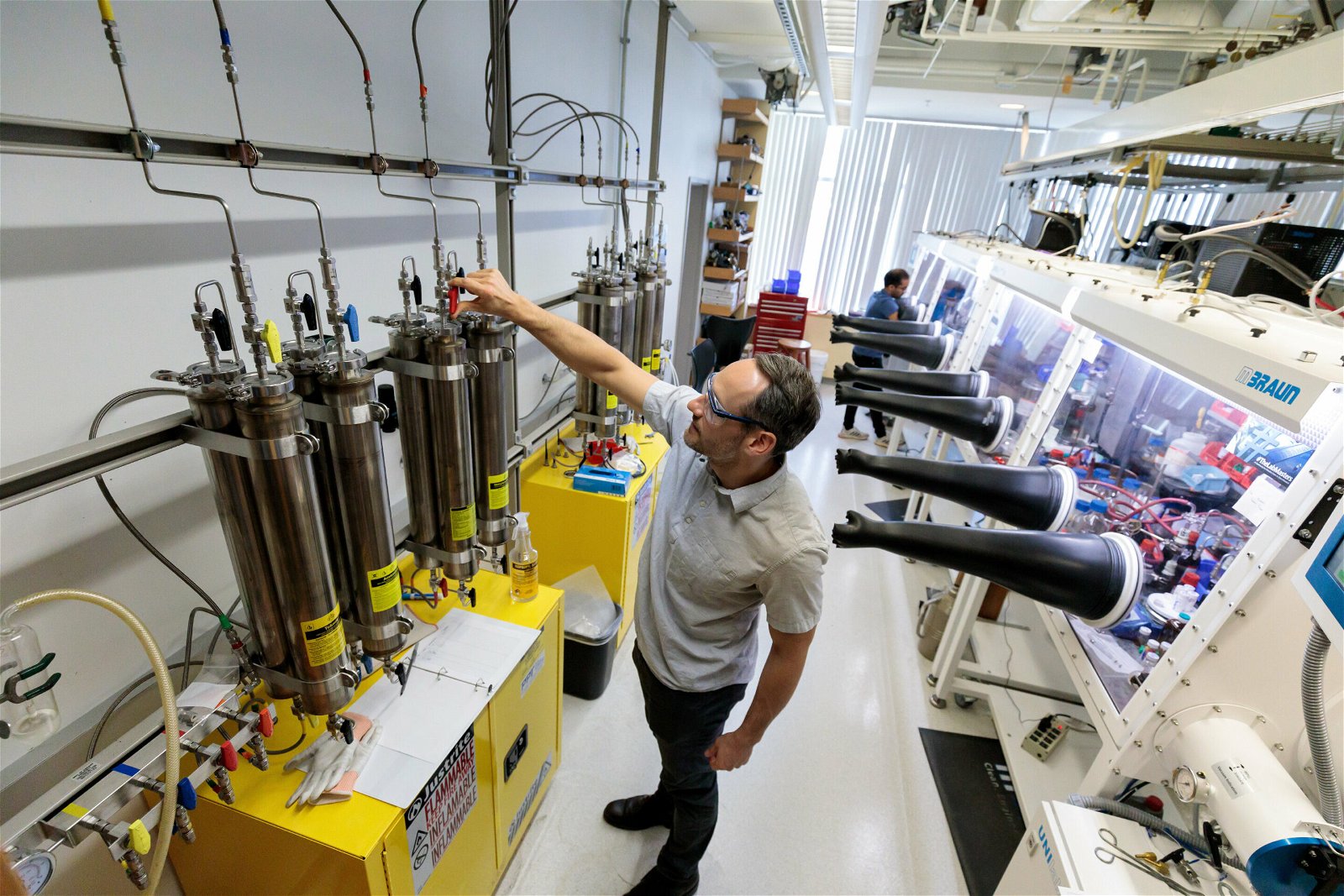Scientists from University of Chicago they discovered a way to create a material that can be made like plastic but still be a good conductor of electricity. That is, it has the properties of a metal.
The survey, published on October 26 in Nature, shows how to make a kind of material in which its molecular fragments are jumbled and disordered, but can conduct electricity remarkably well.

Photo by John Zich/University of Chicago
"In principle, this opens up the design of a whole new class of materials that carry electricity. They will be very easy to form and very resistant to everyday conditions," said John Anderson, an associate professor of chemistry at the University of Chicago and one of the authors of the study.
Jiaze Xie (Ph.D. '22, now at Princeton), also an author on the study, began experimenting with some materials that were discovered years ago but largely ignored.
He added nickel atoms like pearls to an array of molecular beads of carbon and sulfur and began testing them. To the scientists' surprise, the material reacted like a conductor for electricity and was very stable.
"We heated it, cooled it, exposed it to air and moisture, even dripped acid on it and nothing happened," Xie said. This will be extremely useful for a device that needs to work continuously in real-world conditions. But for the scientists, the most striking thing was that the molecular structure of the material was disturbed. "From the fundamental knowledge we have, this shouldn't be a metal," Anderson said, and "there's no theory that can explain it."
Xie, Anderson and their lab collaborated with other scientists from across the university to try to understand how the material can conduct electricity.
After tests, simulations and theoretical work, they believe the material forms layers, like sheets of lasagna. So the electrons can still move horizontally or vertically as long as the pieces are touching each other. The end result is an unprecedentedly conductive material.
Scientists are excited because their discovery brings a fundamentally new beginning planning for electronic technology. Pipelines are so important that virtually every new development opens up new avenues in technology.
The report states that the new material "can be manufactured at room temperatures" and that it "can also be used where the need for a device or parts of the device must withstand heat, acid or alkalinity, or moisture."
Xie added: "We think we can make it 2D or 3D, make it porous or even add other functions".





